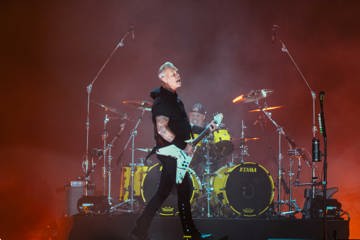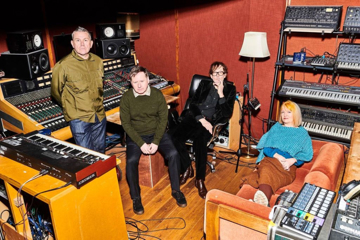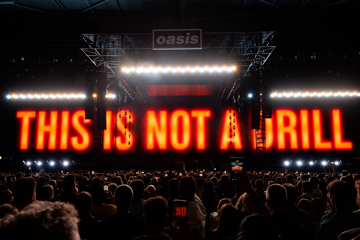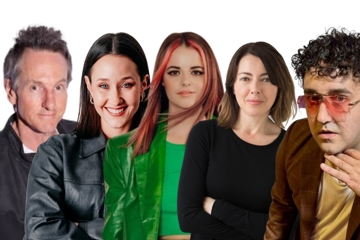Travel: Route 36 the world's only cocaine bar
PLACES TO LEGALLY CONSUME DRUGS
ON THE BEACH IN GILI TRAWANGAN
Mushroom milkshake vendors dot the main drag of this idyllic Indo island. Pick one up, then sit the fuck down – you're in for a show.IN A CANOE ON THE AMAZON
Found in jungles of Brazil, the Sapo looks like a green tree frog on 'roids. However, his venom's heaps psychedelic, man; burn it into your skin and see the music.RIDING ALONG THE CANALS OF AMSTERDAM
Long seen as the legal drug mecca, the 'Dam lures you in with its hazy charm before spitting you back out fragile and alone. Listen to the guy behind the counter.CAMPING IN THE MOJAVE DESERT
Get some salvia, drive into the lonely Californian yonder and hold on as you embark on a journey that you're very much not ready for.TRAWLING THE STREETS OF ROPPONGI
The Tokyo suburb that's designed to inflame your senses can be taken to the next level with a quick stop at one of the many head stores found in the neon maze.
Noble Dye drives down the fast lane at Route 36 – the world's only 'cocaine bar'.
The hostel scene at Wild Rover is colourful and borderline messy at barely 8pm. A cute Canadian bartender sporadically offers schnapps free pours standing from the oak top bar, and a range of global nomads shark around the pool table and jukebox. We arrived at the Irish themed establishment today and already we're feeling the pinch of an altitude assisted happy hour, with me and my two mates managing to find ourselves in a drunken dribble session with a lairy lad from England. He says he can help us get to the infamous Route 36 tonight but we're dubious at best because really, can you imagine a bar existing that has cocaine on the menu?
 Situated over 4,000 metres above sea level at its highest point, Bolivia's legislative capital La Paz isn't know for much except it's head spinning elevation, accessibility to the world's most dangerous road and a drug culture for tourists that's unlike any on the planet. Ever since the book Marching Powder drew a global audience to the post-millennial cocaine culture here, La Paz has attracted backpackers looking to flirt with the dangers of the dark side for a sniff of some of the most pure snow produced anywhere.
Situated over 4,000 metres above sea level at its highest point, Bolivia's legislative capital La Paz isn't know for much except it's head spinning elevation, accessibility to the world's most dangerous road and a drug culture for tourists that's unlike any on the planet. Ever since the book Marching Powder drew a global audience to the post-millennial cocaine culture here, La Paz has attracted backpackers looking to flirt with the dangers of the dark side for a sniff of some of the most pure snow produced anywhere.
But for all the research my buddies and I have done in the lead-up to this leg of our cross-continent South American trek, Route 36 still seems like an urban myth. That is until we meet Rowdy Brit at our hostel. Over the heaving mid-week party surrounding us, he tells of his experience; how the staff bring the coke to your table; how it only costs $14 a gram. The Englishman then explains that like the drug scene of many cities, information is kept bubbling just below the surface of regular society. He writes a Spanish translation on the back of a napkin, tells us to read it out when we jump in a cab and sends us on our way.
Don't miss a beat with our FREE daily newsletter
Unbelievably it works. Our Spanglish is somehow deciphered by the large, moustached cabbie and with an affirmative grunt we're off. We stop five minutes later on a badly lit street that looks like every other badly lit street in La Paz. The driver is quick to take our money and floors it into the distance; we're left standing on the curb not knowing quite what to do. Suddenly to our right a roller door crashes upwards and a man ushers us inside with what you'd call casual urgency. And then for a fleeting moment it's just like any other club in the world: we pay a fee, receive a stamp and walk down a long, snaking corridor.
Things begin shifting from levels of expected to 'holy fuck' when we finally reach the main room. It's a fairly derelict space – probably a nightclub as recent as a few years ago but it hasn't aged well. There's coloured cellophane stuck crudely over lights to give it all a bit of razzle dazzle, while The Rolling Stones Paint It Black powers out from the speakers. It's a suitable soundtrack. We grab a seat at one of the last remaining booths that run a semi-circle around the dancefloor and take in the happenings. There's maybe 20 people inside divided into around six or seven groups; talking is continual but contained. Two sounds are unmistakable though – credit cards knocking on wood and nostrils inhaling – and they're both happening at alarmingly fast intervals.
We're still trying to get our bearings on all of this when we're greeted by a kind looking woman – no older than 40 – who verbalises our run sheet: order drinks, order rack, repeat at your will. When she returns a few minutes later we honestly can't believe what's presented to us. Lying flat, next to our Heinekens and vodkas, is a well-wrapped white parcel containing the salt of the land. And so it begins.
General word is that authorities have been trying to shut Route 36 down for years but due to its continually changing location – the bar moving every month or so – they've never been able to do it. This has to be bullshit. If the local policia wanted to find the bar they'd only need to locate the trail of wired foreigners released back onto La Paz's streets each morning. Make no mistake, this is a legitimate operation, and some individual with a badge and a title is taking their cut of this foreign stimulus package. America's 'War on Drugs' was lost when coca farmer Evo Morales was elected president in 2006, and now with the plant rooting deeper into soil and society, a shady side of alternative tourism has emerged.
Eight hours pass at Route 36; night's turned into day, and now the three of us are ambling through a bustling morning market scene trying to compute the madness we've just left behind. We solved the world's problems, if only we knew, made some amazing friends that we'll never remember, and had a once-in-a-lifetime experience that we'll never forget.







